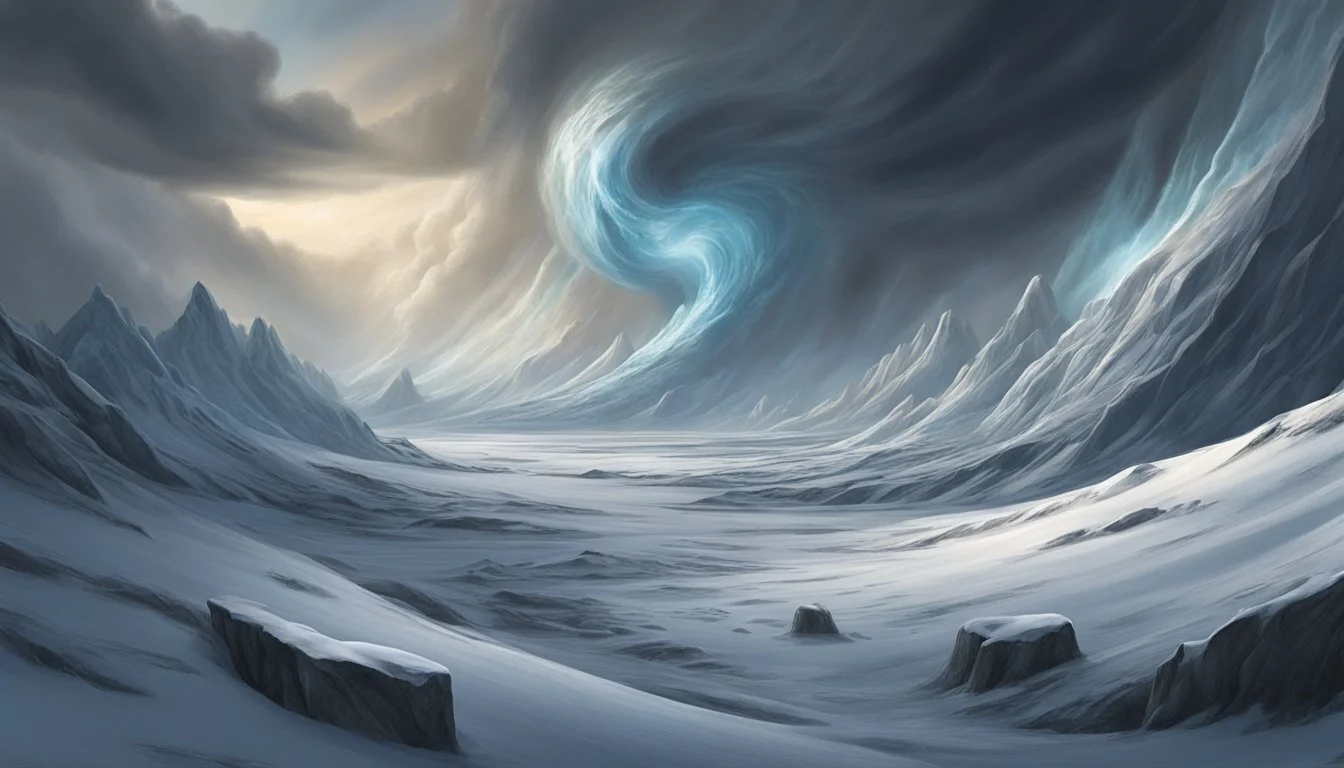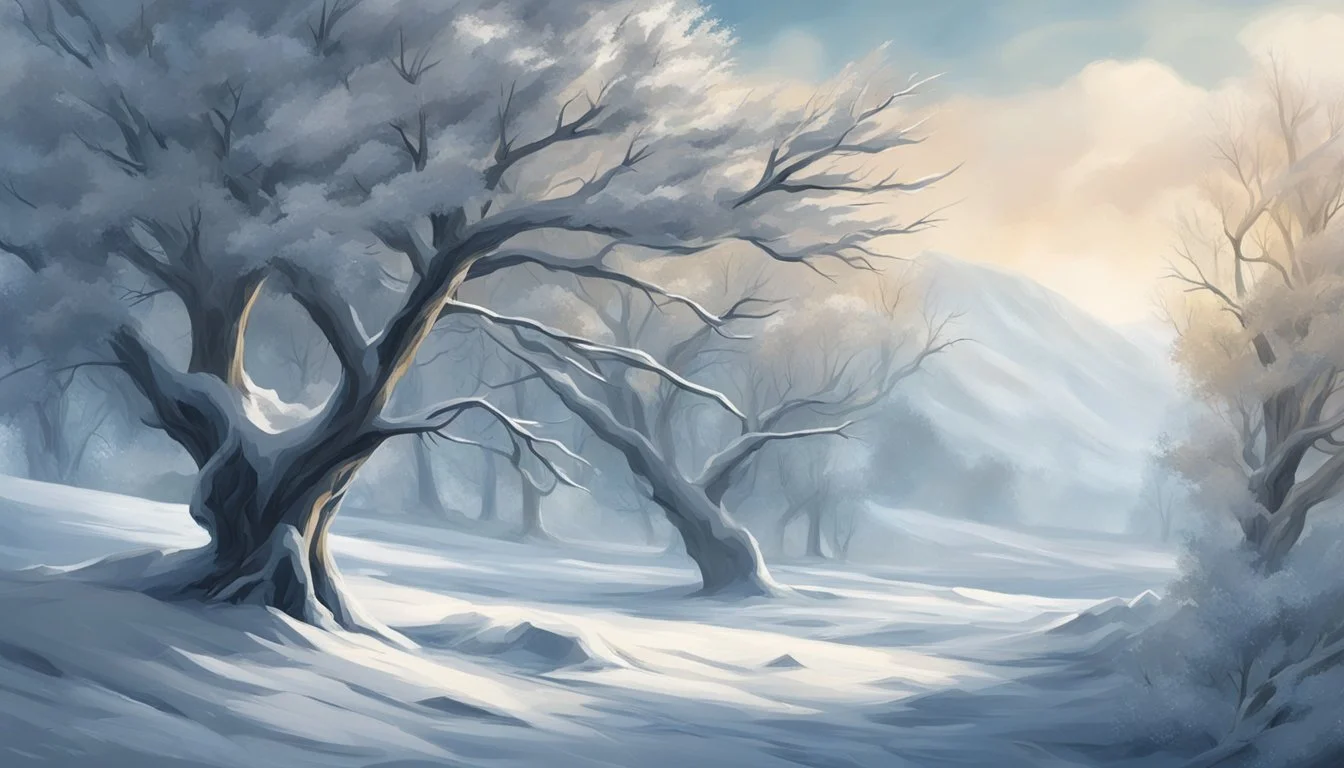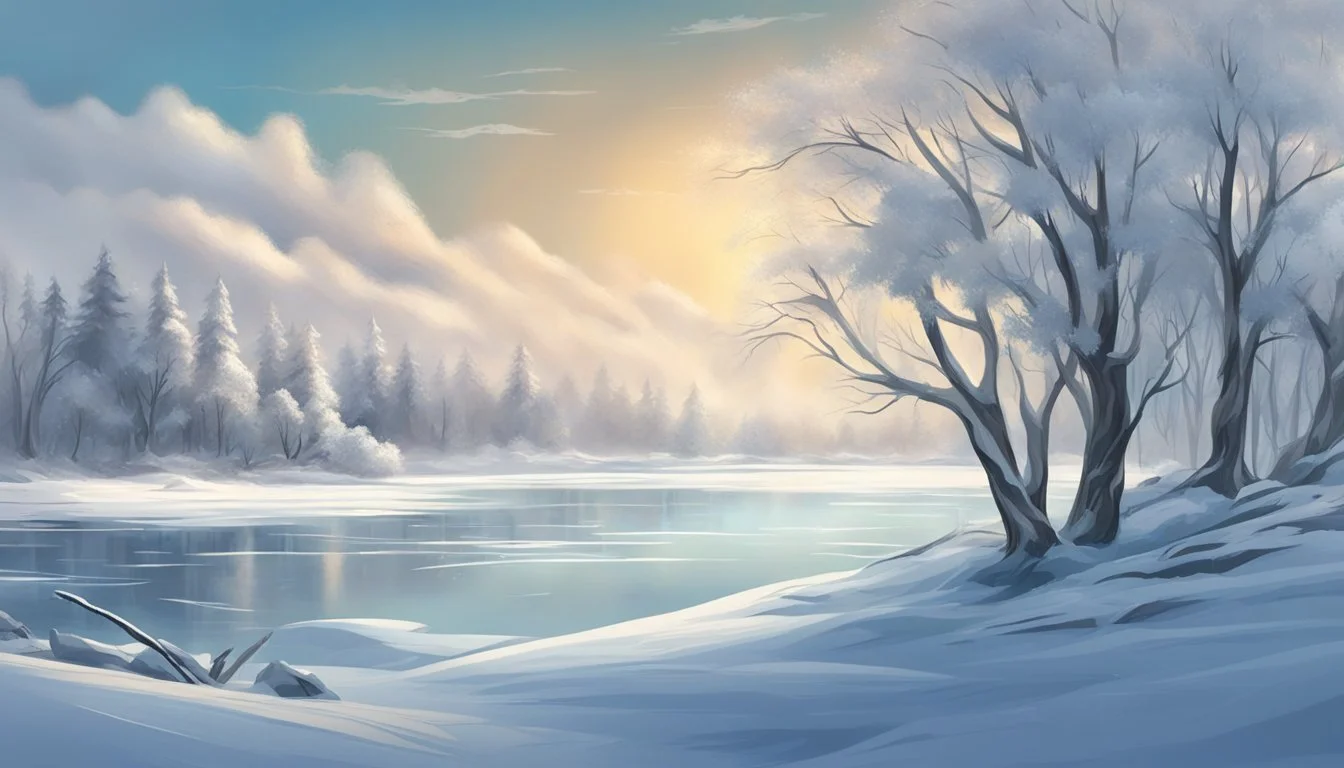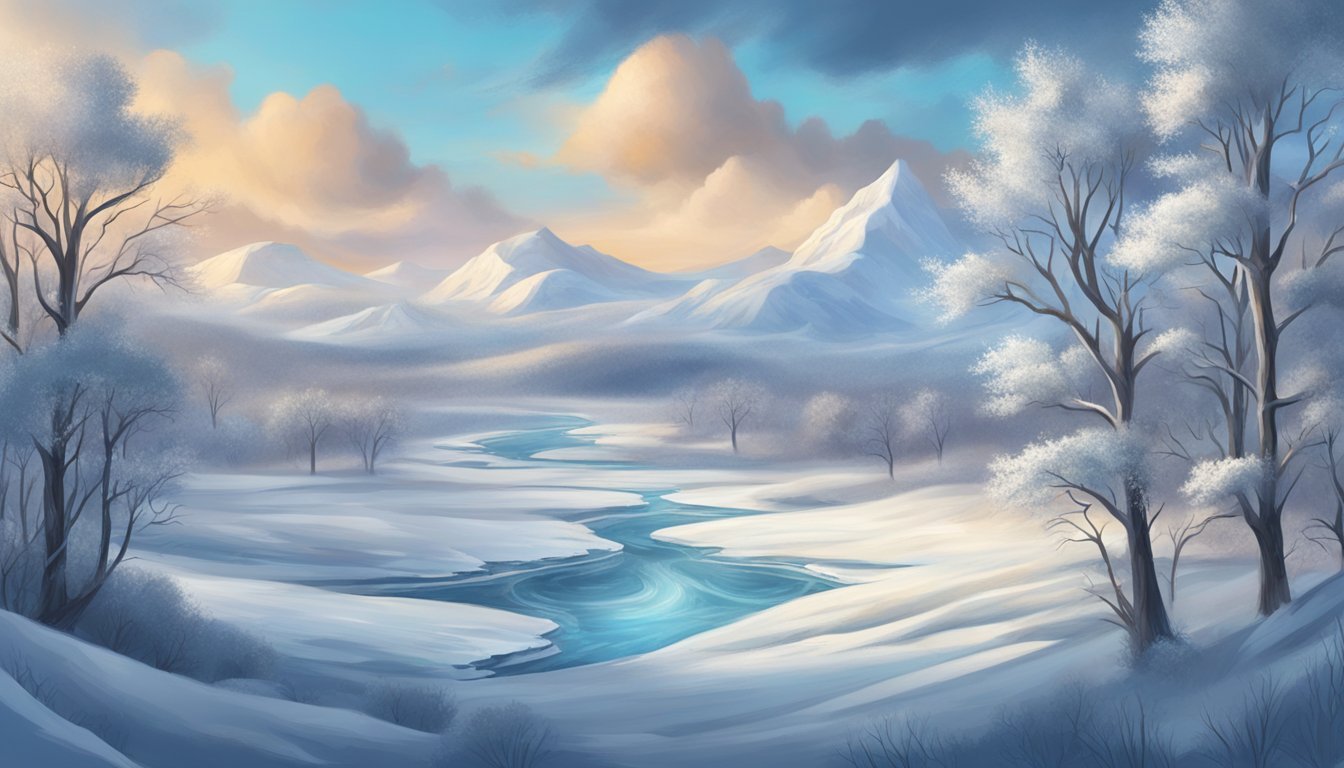5 Polar Vortex Documentaries That Will Freeze You in 2019's Tracks
Revisiting Extreme Weather Events
The polar vortex that gripped the United States in early 2019 left an indelible mark on the nation's collective memory. As temperatures plummeted to record lows across the Midwest, people huddled indoors and marveled at the extreme weather conditions outside their windows. These five polar vortex documentaries capture the chilling reality of the 2019 cold snap, offering viewers a stark reminder of nature's power.
Stunning visuals of ice-covered landscapes and frost-bitten cities dominate these films. From Chicago's steaming Lake Michigan to Minnesota's frozen waterfalls, the documentaries showcase the eerie beauty that emerged from the dangerous cold. They also delve into the science behind the polar vortex, explaining how climate change may be influencing these extreme weather events.
Beyond the spectacle, these documentaries explore the human impact of the 2019 polar vortex. They highlight the challenges faced by vulnerable populations and the heroic efforts of emergency responders. Viewers will gain a deeper appreciation for the resilience of communities in the face of harsh weather conditions.
The Science Behind the Polar Vortex Phenomenon
The polar vortex is a complex atmospheric phenomenon that profoundly impacts global weather patterns. It forms in the stratosphere above Earth's poles and can cause extreme cold temperatures when disrupted.
Defining the Polar Vortex
A polar vortex is a large area of low pressure and cold air circulating around the Earth's poles. It typically forms in the stratosphere, about 6 miles above the surface. The vortex rotates counter-clockwise in the Northern Hemisphere, helping to contain cold Arctic air.
During winter, the polar vortex strengthens and expands. Its circulation can become unstable, allowing frigid air to push southward into lower latitudes. This instability can lead to dramatic temperature drops in affected regions.
The vortex is not a single storm but a persistent feature of Earth's atmosphere. Its behavior varies from year to year, influencing winter weather patterns across the Northern Hemisphere.
Climatic Impact of a Polar Vortex
When the polar vortex weakens or splits, it can have significant climatic impacts. Cold Arctic air can plunge into lower latitudes, causing severe winter weather conditions. These events can bring dangerously low temperatures, heavy snowfall, and strong winds to affected areas.
The 2019 polar vortex event was particularly severe. It caused temperatures to plummet across the Midwest and Northeast United States. Some regions experienced wind chills as low as -60°F (-51°C). These extreme conditions led to widespread disruptions and posed serious health risks.
Polar vortex events can last for several days to weeks. During this time, they can cause significant damage to infrastructure and agriculture. They also strain energy resources as demand for heating surges.
Polar Vortex and Global Warming
The relationship between polar vortex events and global warming is complex and still under study. Some research suggests that climate change may be influencing the frequency and intensity of these events.
As the Arctic warms faster than other regions, the temperature difference between the poles and lower latitudes decreases. This reduced temperature gradient may weaken the polar vortex, making it more prone to disruption.
A weakened vortex is more likely to allow cold Arctic air to escape southward. Paradoxically, this can lead to more frequent extreme cold events in mid-latitude regions, even as global average temperatures rise.
Scientists continue to study these connections to better understand and predict future polar vortex events in a changing climate.
Historical Impact of the 2019 Polar Vortex
The 2019 polar vortex brought unprecedented cold to North America, shattering temperature records and disrupting daily life. Its effects rippled through communities, economies, and infrastructure.
Record-Breaking Temperatures in the United States
In late January 2019, the Midwest experienced bone-chilling cold. Chicago saw temperatures plummet to -23°F (-31°C), with wind chills reaching -52°F (-47°C). Minneapolis hit -28°F (-33°C), while parts of Illinois, Michigan, and Wisconsin faced similarly extreme conditions.
These temperatures were colder than parts of Antarctica and Siberia. Mount Carroll, Illinois, set a new state record at -38°F (-39°C). The frigid air mass stretched from the Dakotas to New York, affecting over 200 million people.
Adverse Effects on Daily Life
The polar vortex disrupted normal routines across the region. Schools and universities closed, including the University of Iowa where a student tragically died in the extreme cold. Thousands of flights were canceled, stranding travelers.
Hospitals saw a surge in cold-related injuries. Frostbite cases spiked, with some patients requiring amputation. Emergency shelters opened to protect vulnerable populations.
Mail delivery halted in some areas. Many businesses shut down, and outdoor workers faced dangerous conditions. The cold snap even affected crime rates, with some cities reporting fewer incidents as people stayed indoors.
Economic and Infrastructural Damage
The 2019 polar vortex caused significant economic losses. Estimates suggest billions in damage and lost productivity. Retail sales dropped sharply as consumers stayed home. Agriculture suffered, with crops and livestock at risk.
Infrastructure faced severe challenges. Pipes burst in homes and businesses. Power outages affected thousands as electrical systems strained. Roads cracked, and rail lines buckled under the extreme temperatures.
Natural gas usage spiked, leading to supply issues in some areas. Utility companies struggled to keep up with demand. The event highlighted vulnerabilities in energy systems and sparked discussions about climate resilience.
Regional Effects throughout the United States
The 2019 polar vortex event brought extreme cold temperatures and dangerous weather conditions to large swaths of the United States. Its impacts varied significantly across different regions, causing widespread disruptions and hazardous situations.
The Midwest's Frozen Grip
Chicago experienced temperatures of -23°F (-31°C), with wind chills reaching -50°F (-46°C). Michigan, Wisconsin, and Minnesota saw similarly frigid conditions. Schools and businesses closed across the region. Hospitals treated numerous cases of frostbite and hypothermia.
Utility companies urged customers to conserve energy to prevent grid failures. Some areas faced power outages due to increased demand and equipment malfunctions in the extreme cold.
Lake Michigan partially froze, with ice coverage reaching 40-50%. The cold snap caused water main breaks in several Midwestern cities, leaving some residents without water service.
Northeastern States and Snow Emergencies
New York City recorded a low of 2°F (-17°C), prompting officials to open emergency warming centers. Boston faced dangerous wind chills of -35°F (-37°C). Heavy lake-effect snow buried parts of upstate New York and Pennsylvania.
Governors in several Northeastern states declared states of emergency. Road conditions became treacherous, leading to numerous accidents and highway closures. Amtrak suspended some rail service due to frozen switches and other cold-related issues.
Homeless shelters in major cities reached capacity as they worked to bring people in from the deadly cold. Some Northeast airports temporarily halted operations due to icy runways and equipment failures.
Unusual Weather Patterns across the Nation
While the Midwest and Northeast battled extreme cold, other regions experienced atypical conditions. Parts of Alaska saw above-average temperatures, with some areas 20°F warmer than usual for January.
California faced heavy rain and flooding in normally dry areas. The San Francisco Bay Area received twice its average January rainfall. Mudslides and road closures affected parts of Southern California.
Florida experienced a rare chill, with temperatures dropping into the 30s Fahrenheit in central and northern parts of the state. Farmers scrambled to protect citrus crops from frost damage.
Texas saw a mix of effects, with northern areas facing ice storms while southern regions remained relatively warm. This stark contrast highlighted the polar vortex's far-reaching and varied impacts across the country.
Response and Adaptation Strategies
The polar vortex of 2019 prompted swift action from emergency services, meteorologists, and communities. Innovative forecasting techniques and public education initiatives emerged to better prepare for extreme cold events.
Emergency Services and Community Response
Local governments activated emergency operations centers to coordinate responses. Shelters opened in neighborhoods and schools to provide warmth for vulnerable populations. Utility companies deployed extra crews to repair power outages.
Community organizations mobilized volunteers to check on elderly residents. Some cities implemented programs to distribute cold weather gear like coats and blankets. Local businesses pitched in by offering free hot meals and warming spaces.
First responders received specialized training for cold-related emergencies. Hospitals prepared for an influx of frostbite and hypothermia cases. Emergency vehicle fleets were winterized with extra batteries and anti-gel additives for fuel lines.
Innovations in Weather Forecasting
Meteorologists leveraged improved computer models to track the polar vortex. High-resolution satellite data allowed more accurate predictions of temperature drops. The National Weather Service issued experimental "extreme cold warnings" to emphasize the danger.
New mobile apps provided real-time alerts about dangerous wind chills. Some cities installed networks of temperature sensors to monitor street-level conditions. Utilities used forecasts to predict power demand spikes and prevent grid overloads.
Universities like the University of Iowa developed machine learning algorithms to better predict vortex behavior. This research aimed to extend reliable forecast lead times from days to weeks for future events.
Public Awareness and Education
Government agencies launched public information campaigns about cold weather safety. Schools incorporated extreme weather preparedness into curricula. Social media platforms amplified cold safety tips from trusted sources.
Infographics explained concepts like wind chill and frostbite risk. Videos demonstrated proper layering techniques for outdoor clothing. Public service announcements reminded people to check on neighbors and bring pets inside.
Local news stations aired segments on home weatherization and preventing frozen pipes. Hardware stores offered workshops on preparing homes for extreme cold. Public libraries hosted seminars on recognizing hypothermia symptoms and administering first aid.
Human Interest and Societal Impact
The 2019 polar vortex affected millions of Americans, testing their resilience and exposing societal vulnerabilities. Communities rallied together while media coverage brought attention to those most at risk.
Personal Stories of Perseverance
A University of Iowa student braved -30°F temperatures to attend classes, layering six pairs of pants and three coats. In Chicago, residents organized shelter drives for the homeless. A Brooklyn woman started a coat exchange program, collecting over 500 donations in two days.
Neighbors checked on elderly residents, delivering hot meals and medication. Local businesses opened their doors as warming centers. One restaurant owner provided free hot chocolate to anyone in need.
These acts of kindness highlighted the human spirit's strength in the face of extreme weather.
Health and Homelessness during the Polar Vortex
The polar vortex posed severe health risks, particularly for vulnerable populations. Hospitals reported a surge in frostbite and hypothermia cases. At least 22 deaths were attributed to the cold snap.
Homeless individuals faced life-threatening conditions. Shelters reached capacity, forcing many to seek refuge in 24-hour businesses or public transit. Chicago deployed buses as mobile warming centers.
Health departments issued warnings about the dangers of prolonged exposure. Schools and businesses closed to keep people indoors. Emergency services worked overtime to respond to weather-related incidents.
The Role of Media and Journalism
Media outlets played a crucial role in informing the public during the polar vortex. Reuters and other news agencies provided real-time updates on temperature drops and travel disruptions.
Journalists braved extreme conditions to report from the field, showcasing the impact on daily life. Weather forecasters worked around the clock to provide accurate predictions and safety advice.
Social media became a platform for sharing survival tips and coordinating community aid efforts. Local news stations highlighted warming center locations and emergency contact information.
The extensive coverage raised awareness about climate change and its potential link to extreme weather events.
Beyond 2019: Long-Term Effects and Future Predictions
Polar vortex events have significant long-term implications for weather patterns, infrastructure, and scientific research. Climate change continues to influence the frequency and intensity of these phenomena, prompting the need for improved forecasting and mitigation strategies.
Changing Weather Patterns and Future Forecasts
Climate models suggest polar vortex disruptions may become more frequent in the coming decades. This could lead to more extreme cold snaps in mid-latitude regions. Scientists are working to improve long-range forecasts for these events.
Some research indicates that Arctic warming may weaken the polar vortex, potentially increasing its instability. This could result in more frequent cold air outbreaks in North America and Eurasia.
Meteorologists are developing new tools to better predict polar vortex behavior. These include advanced satellite technology and improved computer models.
Mitigating the Effects of Extreme Cold
Cities and communities are adapting infrastructure to withstand prolonged periods of extreme cold. This includes:
Upgrading power grids to handle increased energy demand
Improving insulation in buildings
Developing more efficient heating systems
Emergency response plans are being updated to better address polar vortex events. These plans focus on protecting vulnerable populations and maintaining essential services.
Public education campaigns aim to increase awareness about cold weather safety. They provide information on proper clothing, home preparation, and recognizing signs of hypothermia.
Ongoing Research on Polar Vortices
Scientists are studying the complex interactions between the polar vortex and other atmospheric phenomena. This research aims to improve understanding of global climate systems.
Satellite observations and weather balloons provide valuable data on stratospheric conditions. This information helps researchers track polar vortex behavior and predict potential disruptions.
Climate change impacts on the polar vortex remain an active area of study. Researchers are investigating how Arctic sea ice loss and warming temperatures affect vortex stability.
International collaboration is key to advancing polar vortex research. Scientists from multiple countries share data and resources to gain a more comprehensive understanding of these events.




